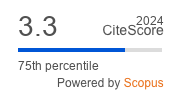Article | Open Access
Risky Obliviousness Within Fragmented Services: Experiences of Families With Disabled Children During the Covid‐19 Pandemic
| Views: | 3462 | | | Downloads: | 1733 |
Abstract: Living on an island in a pandemic has its obvious advantages. However, in a globalised economy, border restrictions cannot keep the COVID‐19 virus completely at bay. Despite coordinated efforts at infection control and extensive vaccination, Iceland, a sparsely populated island in the north, was placed among the countries in the highest risk category by the ECDC. In this article, wereport a qualitative study carried out at the peak of the fourth COVID‐19 wave in 2021, when the pandemic had severely hit the Icelandic social and healthcare system, with a record‐breaking number of infections. Semi‐structured interviews were conducted with parents with seven disabled children. Guided by feminist standpoint theory and critical disability studies, we focused on how service structures affected and shaped parents’ and children’s experiences during the first waves of the pandemic. The findings suggest that the pandemic intensified the already precarious position of the families. During the pandemic, the gaps in the already fragmented services widened, and the families were left to navigate this new reality on their own. Preventive measures enforced by municipalities and healthcare services centred on non‐disabled people’s experiences and needs. Unprepared service systems distanced themselves from the families while maintaining governance and supervision over defining their need for support.
Keywords: Covid‐19; disabled children; family support; Iceland; social inequality
Published:
© Hrafnhildur Snæfríðar- Gunnarsdóttir, Tinna Ólafsdóttir, Kristín Björnsdóttir. This is an open access article distributed under the terms of the Creative Commons Attribution 4.0 license (http://creativecommons.org/licenses/by/4.0), which permits any use, distribution, and reproduction of the work without further permission provided the original author(s) and source are credited.


